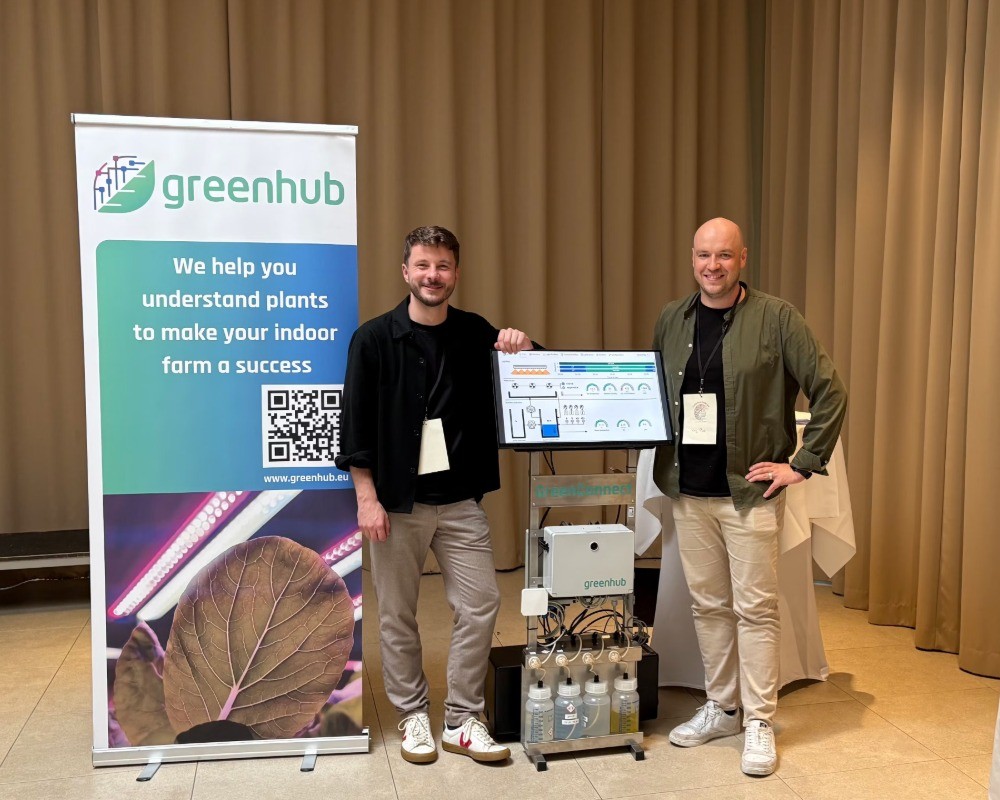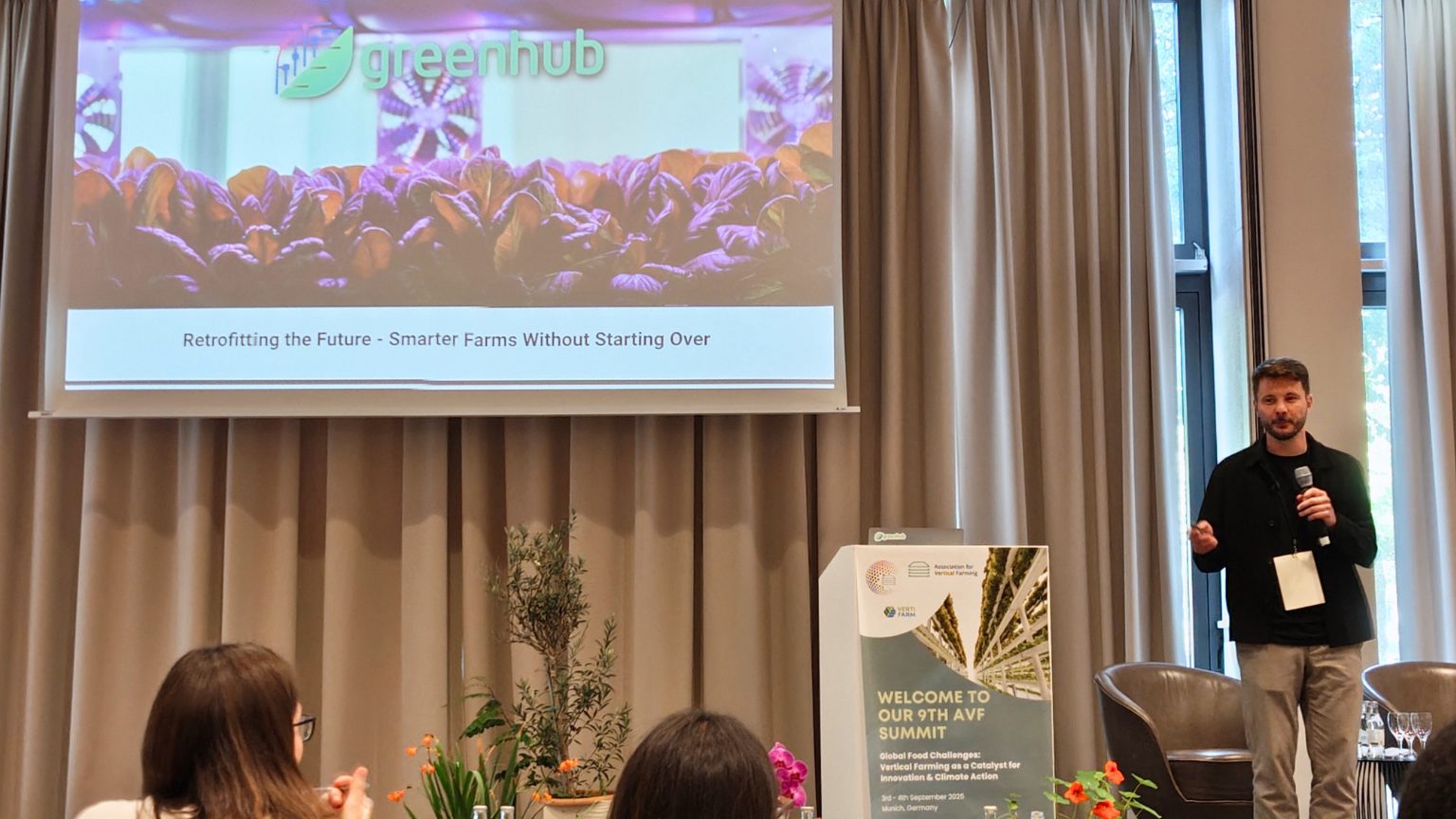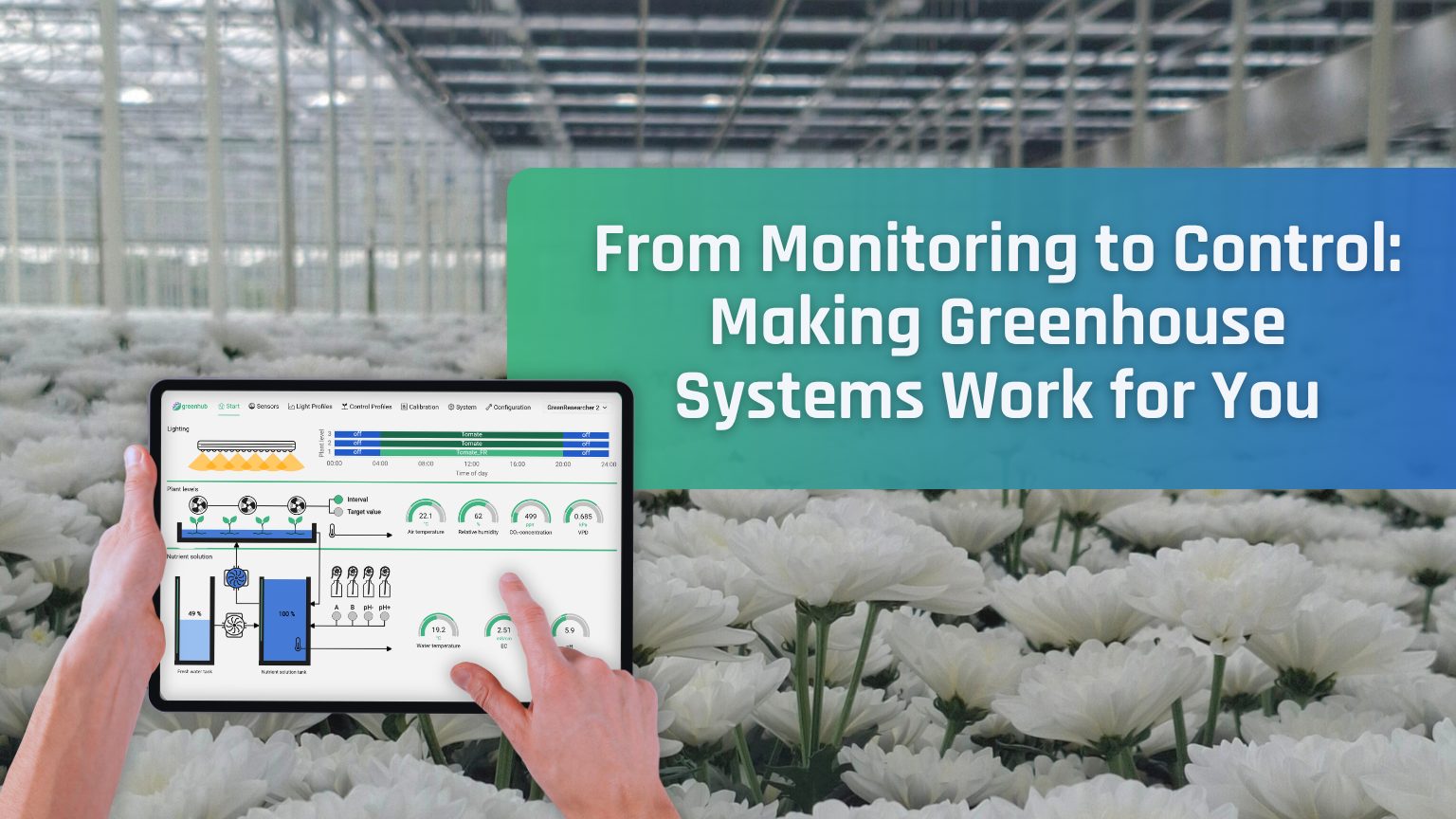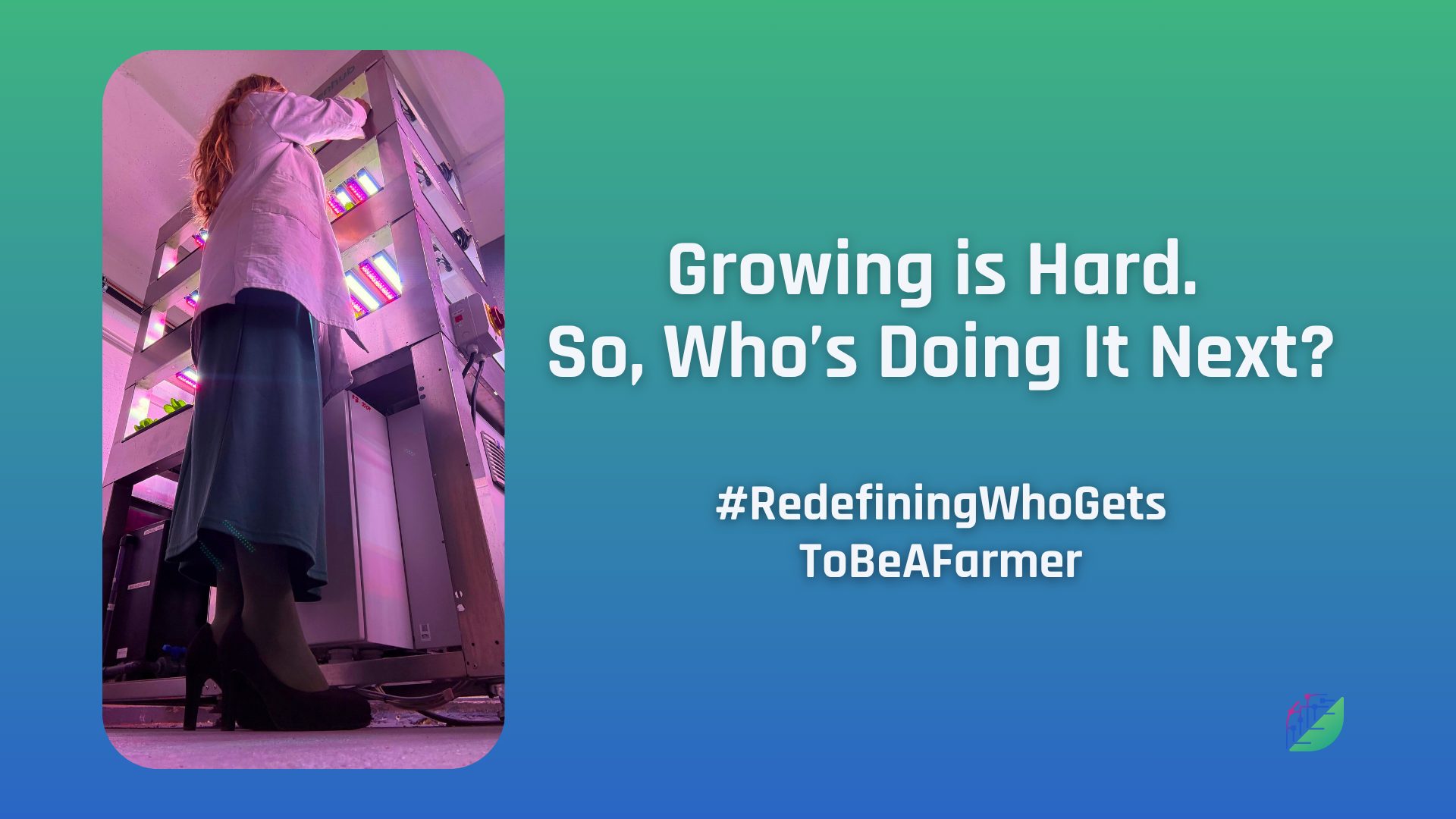The AVF Summit 2025 in Munich brought together global stakeholders from science, policy, technology, and industry to discuss the future of food production in the face of ecological, geopolitical, and urban challenges. Structured along six thematic pillars, the two-day program provided both global perspectives and practical solutions, from climate action to investment strategies. The discussions highlighted how vertical farming is moving beyond early hype toward practical, market-driven solutions. Below are some of the main insights and debates that stood out.
Profitability and Market fit in CEA
The investment discussions in Pillar 3 echoed this same theme: without clear market fit, even the most advanced cultivation systems will struggle to secure long-term viability. Especially the panel of and introduction to CEA 360 profitability framework which we would like to elaborate on further. It was an interesting panel by Professor Joel Cuello on how to make indoor farming profitable, in which Marcos Enriquez of ISIFARMER and our Alexander Jaworski shared their respective visions for this business in this interactive panel.
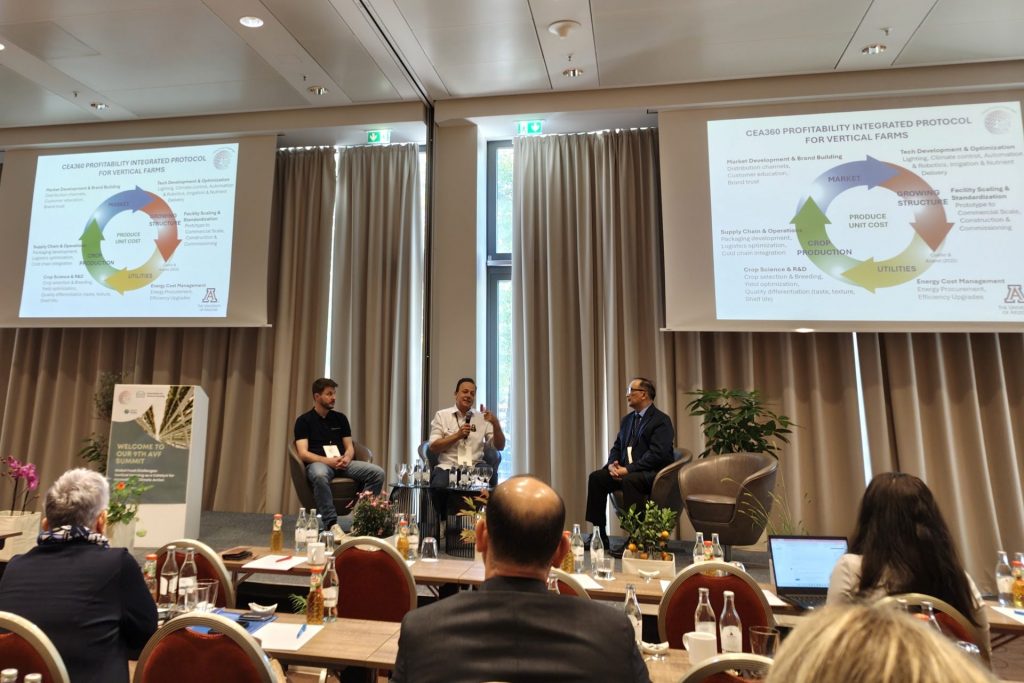
CEA 360 Profitability: An Integrated Protocol for Vertical Farms
The concept of Prof. Joel Cuello for making a vertical farm profitable is a very interesting one even though we would change the direction of the arrows. It should start with the market.
We have seen too many vertical farm ideas without having the offset for the amount of produce they were able to produce, or they didn’t achieve the yields according to their contracts. A good insight during the AVF Summit was also that farms did not grow the right crops for the regions of the world they were operating in. So the produce-market fit was not given.
People like to buy what they always buy; if it is produced locally, even better. But growing something exotic for a place that is also more expensive than what people are used to will most likely fail. There are also prominent cases from the past where such a produce-market fit was not given.
Once you have identified the right produce and quantities for the right market, you move on to the supply chain operations, crop R&D, and so on. The cultivation system is a natural outcome at the end, not your starting point. So, it all starts with the market and ends with the production system, not the other way around.
Contribution of Indoor Farming to Food Security
The Current Status Quo
Growing staple crops would lead to food security. This ties into broader climate-action debates at the summit (Pillar 2), where speakers stressed that resource efficiency and CO₂ accounting must align with crop choices that genuinely support food security.
As we only eat 5.7 kg of lettuce in Germany per year, it only makes up 5.5% of the overall vegetable consumption and 1.7% of all food we consume on average in Germany per capita (Leipzig University source). To speak about food security while growing leafy greens seems too far-fetched, according to the conversations we had at the AVF Summit. The trend must lead to more caloric crops as well as staple crops.
The definition of staple crops seems unclear and might need to be broadened.
We already see protein content in wheat at 25% numbers that are way above those of field-grown wheat. Nevertheless, we would currently need an electricity price of 1 ct/kWh to make it cost-competitive with field production.
Which staple crops make sense to grow? Do peas from Veganz provide the next leap forward in that debate for staple crops in vertical farming?
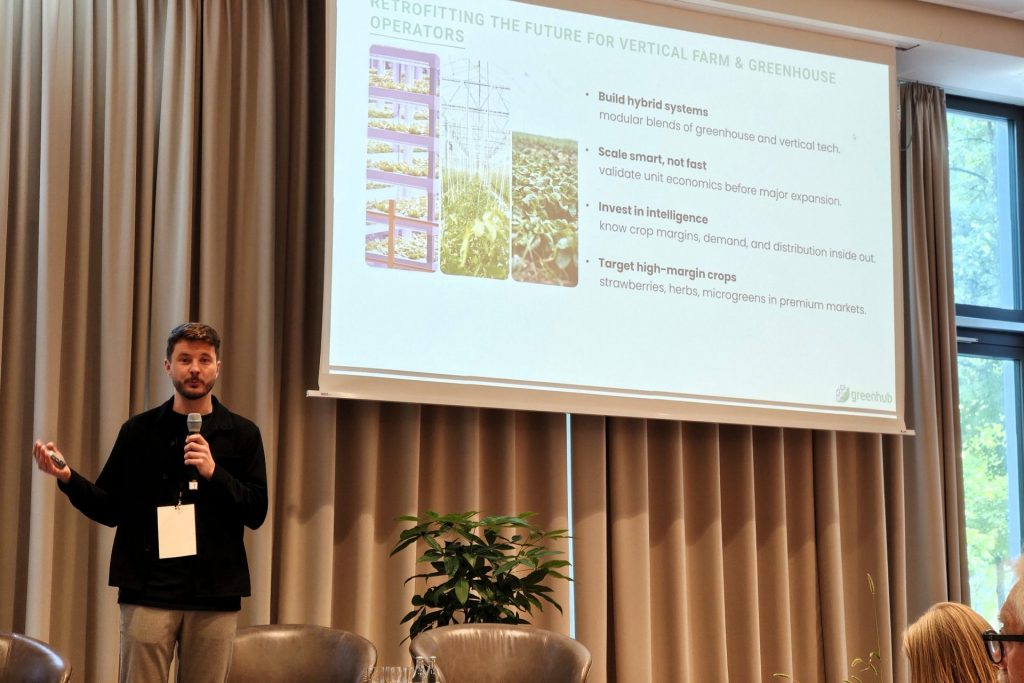
Hybrid Approaches in Vertical Farming
Hybrid Solutions in Urban Structures
Pillar 4 highlighted how cities like Madrid and Singapore are integrating vertical farming into urban infrastructure, showing hybrid approaches where vertical systems complement, rather than replace, existing food production networks. As the industry has been discussing for a while now, we should rather make vertical farming an integrated hybrid solution for now instead of a stand-alone version. The market will develop together with the existing greenhouse market as well as the climate-tech market for climate change-resilient research and forestry.
Hybrid solutions that were discussed, including nurseries for greenhouses, grafting systems, tree seedlings, and speed-breeding facilities.
What approaches do you see that would make for a resilient and future-proof hybrid vertical farming system?
AI in Vertical Farming
Where Are We At?
The technology discussions in Pillar 6, from AI to digital twins, made it clear that data is becoming the most valuable input in CEA. Yet as Alex noted, questions remain around ownership and incentives for data sharing. Companies growing in their own systems, such as Avisomo, are already collecting data that can be used to train and run an AI on their operations. But we are not fully there yet, as Endre stated.
The question also remains: who has data ownership if companies that focus on AI modeling as SaaS models, and not running their own farms, train their systems on actual farm data from farm operators?
If we look at the greenhouse industry, the same question has been discussed for a longer period already, with some hesitation to share data over the last two decades. The silo approach also showed that yields per sqm have been stagnating over the last 20 years, according to a recent Rabobank report.
It is now slowly shifting that people want to learn from each other and share data. To make it more attractive for the farm operator, companies could incentivize data sharing so they have the right to train on farm data, but the farm operator is not just giving away his valuable insights. How could something like this look?
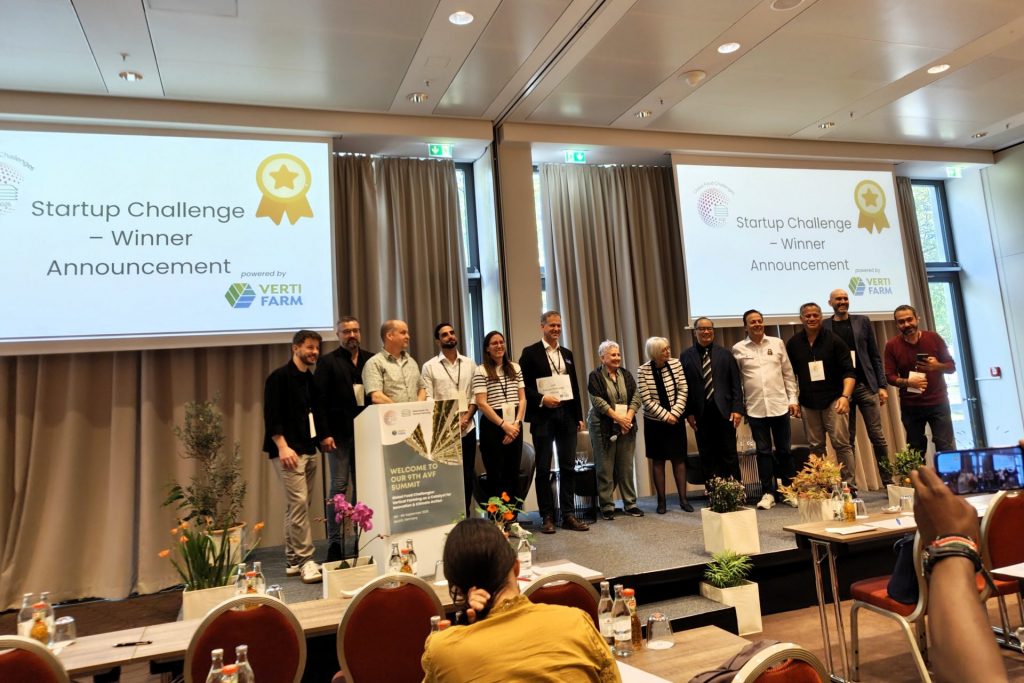
Our Conclusion of the summit
From established players to rising startups showcased in the AVF Startup Challenge (Pillar 5), the summit made clear that the vertical farming sector is maturing and moving from experimentation to execution. The AVF Summit in Munich showed that the vertical farming sector is entering a new phase: profitability models must begin with the market, food security will require staple crops, hybrid systems offer resilience, and AI will only thrive if data sharing is addressed fairly.
The debates sparked in Munich are not about whether vertical farming will play a role, but about how it can become sustainable, profitable, and future-proof.
Who whas there at AVF summit 2025?
In this collaborative setting, it was inspiring to see so many familiar and new faces come together Michał Słota, Andreas Köck, Alessandro Oliveri, Alexander Jaworski, Fadi Sbaiti, Peter Defranceschi, Marcos Enriquez, Susanne Hirschmann, Marie Ammann, Laura Nelson, Tusya Garibashvili, Besan Dahboor Engel, Endre Thesen Harnes, Christine Zimmermann-Loessl, Silvana Nicola, Joel Cuello, Julia Rocha Romero, Senthold Asseng, Reinhard Bott, Hannah Hoven, Martin Parapatits, Fadi Al-Daoud, Andrea Kienle, Mandar Godge, Rachel Norman, Michael Schmidt, Johann Waldherr, Nivedita Mahida-Königsdörfer, Sabine Wittmann, Pooja Suresh Gowda, Eleonora Itri, Nina Kapitan, the VertiFarm team, Susanna Lössl, Patricia Cliff, Christer Tilk — and many more.
It was a rare opportunity to connect and reconnect with colleagues across the vertical farming ecosystem, and to dive into truly in-depth conversations about how far the industry has come, and where it is headed next.
Find out more about our new innovation.
With GreenConnect, we link existing indoor farms to the latest automation technology.
